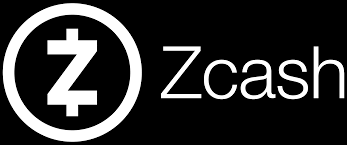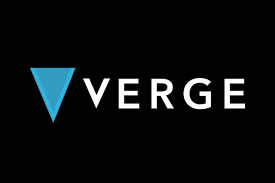About a decade ago, cryptocurrencies were considered mainly nefarious. Fast forward to the present day, and this perception has substantially diminished as mainstream acceptance has grown and more people better understand the technology.
There are still some mysterious elements, especially for purely privacy-conscious coins. These are exciting projects as they uphold two principles of cryptocurrencies in general — decentralization and anonymity.
When Satoshi Nakomoto created Bitcoin, they solved the problem of central control but did not provide a purely private digital currency. It isn’t at all their fault as most cryptocurrencies exhibit the same traits, and understandably so.
Blockchain technology provides transparency and ensures security. We’ll go over the four most anonymous cryptocurrencies, how they work, and their significance in the industry.
Monero (XMR)

It’s only natural to start with Monero, the privacy coin with the largest market cap presently at around $3.9 billion, according to CoinGecko. The project officially went live on the 18th of April 2014, making it one of the oldest in this niche.
Monero has an interesting history, as expected for an anonymous cryptocurrency. For starters, the credited founder, Nicolas van Saberhagen, is still mysterious with no matched real-world identity.
Nicolas van Saberhagen created a cryptographic application layer called CryptoNote, laying the foundation for the numerous technologies employed in Monero. In the whitepaper entitled ‘CryptoNote v 2.0’ released on the 17th of October 2013, the creator outlined their mission of creating a more private version of Bitcoin.
Like many projects inspired by Bitcoin, Monero was previously known as Bitmonero, with ‘bit’ from Bitcoin and ‘monero’ meaning ‘coin’ in the Esperanto language. Monero primarily uses two features for enhancing privacy, stealth addresses, and ‘ring confidential’ transactions.
Stealth addresses are simply one-time addresses generated for every individual transaction. This means no history, sending, and receiving public keys are traceable amongst the two parties. Ring confidential transactions conceal the transacted amount.
Monero transactions can be publicly seen on its block explorer, making it relatively transparent. While Monero has its flaws, experts consider it one of the most private peer-to-peer coins. Learn more about what makes Monero different from Bitcoin.
Zcash (ZEC)

At the time of writing, Zcash is the second-most traded anonymous coin after Monero. Zcash is relatively as superior as its counterpart, boasting some impressive privacy-enhancing technologies.
The project was also inspired by improving upon Bitcoin’s weakness of being inferiorly private when it came to payment history. Zooko Wilcox-O’Hearn, an American cypherpunk, and computer security specialist, is credited as the main developer for Zcash, which was formerly known as Zerocash.
Most coins start from a lengthy whitepaper; Zcash is no exception. A 2013 academic paper named ‘Zerocoin: Anonymous Distributed E-Cash from Bitcoin,’ created by Prof. Matthew Green and his graduate students caught the eye of Zooko.
Zcash was released on the 28th of October 2016. So, how does Zcash primarily tackle the privacy problem? The coin uses zero-knowledge proof, a technology for participants to transact without divulging their addresses while simultaneously confirming a transaction’s validity.
What’s more, Zcash allows users to selectively disclose certain transactions’ addresses rather than make them completely hidden. Like Monero, anyone can view when blocks are created on Zcash’s blockchain.
Verge (XVG)

Verge is another popular privacy coin currently ranked 129 for projects with the highest market cap, according to CoinGecko. Curiously, Verge is a hard fork of the meme coin, Dogecoin. It began under the rather peculiar name DogeCoinDark in October 2014, chiefly developed by American software developer Justin Vendetta.
According to Verge’s ‘blackpaper,’ the project aimed to enhance Bitcoin’s obfuscation for everyday end users similar to Zcash and Monero. DogeCoinDark rebranded into the more accessible and unique name, Verge, on 15 February 2016.
Verge uses TOR (The Onion Router) and I2P (Invisible Internet Project) to conceal the IP addresses of holders to achieve secrecy. These applications run internet traffic through overlay networks.
All transactions are publicly viewable on Verge’s blockchain. For added security, users can choose stealth addresses for individual payments like Monero.
Pirate Chain (ARRR)

Pirate Chain is not nearly as well known as the previous three tokens, making it a surprising inclusion on this list. At present, the project ranks 119 of the most traded coins according to CoinGecko. Nonetheless, it claims to be the ‘most private and secure cryptocurrency to date’, reaching an all-time high value of $16.76 in April 2021.
Pirate Chain is fairly new in the industry as it was officially launched on the 30th of August 2018. So, what makes it special from others? In reality, Pirate Chain uses the same zk-SNARKs or zero-knowledge proof as Zcash.
The main exception is Pirate Chain is ‘private by default’ where privacy is not optional, unlike Zcash and other coins. Pirate Chain seems not to have a public ledger like most coins, which probably explains how it achieves such supreme anonymity.
The cryptocurrency is also unique in that it utilizes delayed proof of work (dPoW), a modified, hybrid version of the traditional proof-of-work consensus mechanism.
With dPoW, a blockchain can benefit from the security of another blockchain. Designed by Komodo, another well-known crypto, Pirate Chain’s dPoW relies on the hashing power of Bitcoin for boosted security. This feature makes double-spending and the dreaded 51% attacks virtually impossible.
Final word
While privacy coins only make up just under 1% of the entire market cap, investors might still consider them because of their uniqueness, with much movement growing in this space.
Despite some negative reception towards these projects due to being used in illicit transfers, they are still an important addition to the industry. Most coins are pseudonymous and reveal the public addresses and amounts in a transaction, which are traceable to an identifiable source on the blockchain.
On the other hand, privacy coins offer more anonymity which is of significance to many users. In the words of Edward Snowden, “Arguing that you don’t care about the right to privacy because you have nothing to hide is no different than saying you don’t care about free speech because you have nothing to say.”








